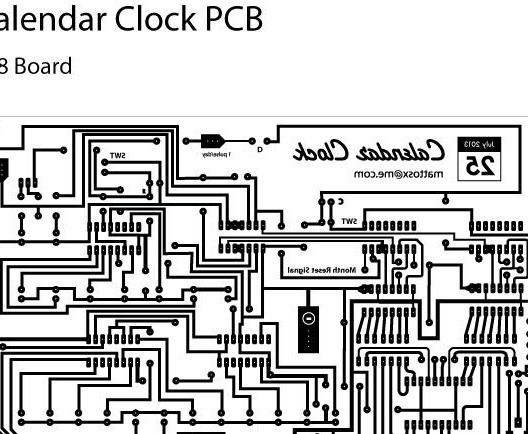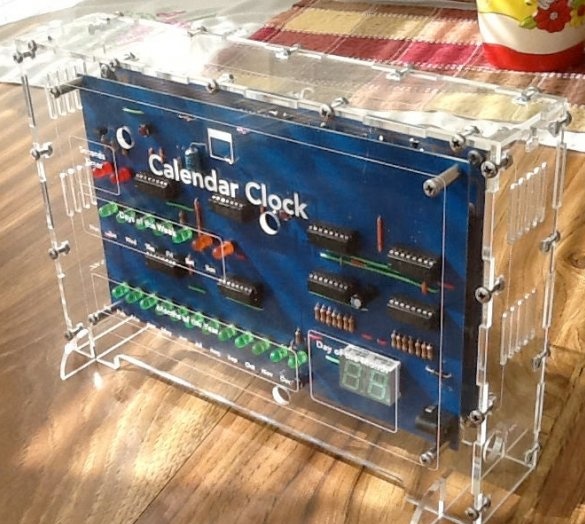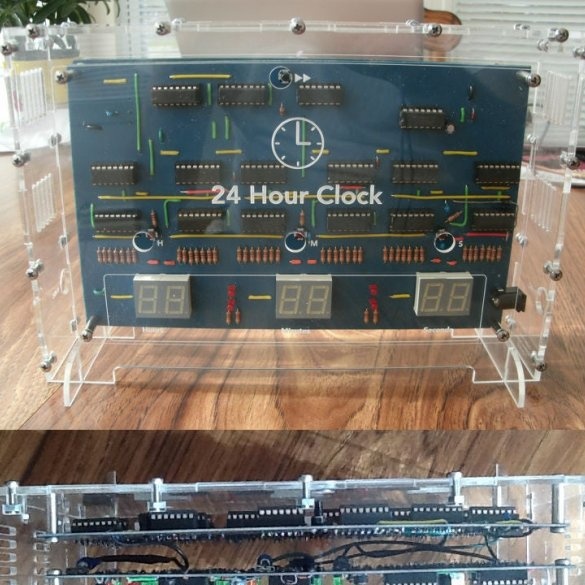Homemade on just eight CMOS chips, proposed by the author of Instructables under the nickname Mattosx, it works like electronic calendar, if you apply two signals to it: rectangular pulses with a frequency of 1 Hz and a switching pulse at each day shift. The day of the week and month are indicated by discrete LEDs, the number by a two-digit seven-segment indicator. To simplify the design, if the previous month is less than 31 days, immediately after the start of the next month you need to enter the date manually. This is what allowed to reduce the number of chips to only eight.
In the author's version, both signals necessary for the operation of the device come from the clock he collected. If there are no such or similar watches, these signals can be generated, for example, by Digispark. If we exclude the “light metronome” with two flashing LEDs, the first of the two signals becomes unnecessary. Then the second signal can be generated even without Digispark - a button with a contact bounce suppressor. The main thing is not to forget to press it before going to bed, and in the morning the calendar will meet you with a new date.
Next, the master brings the device diagram with the "legend" to it:

But this "legend" does not contain all the necessary information, you have to supplement it:
1. '390 is the 74HC390.
2. Chips 4543 are not just depicted inverted - they must be inverted and soldered.
3. AND - this is 4073, a chip with three three-input elements I.
4. Counters 4017 can be replaced with K561IE8.
5. Indicators - LSHD-5601, you can others with a common anode, but if they have a different pinout, you will not have to solder them directly into the board, but connect them with jumpers.
The master leads the drawing of the printed circuit board immediately in a mirror form, so that it would be more convenient to produce it with LUT:

But you can’t print a board drawing from a JPEG file - it will be difficult to maintain the necessary proportions. You need to download the PDF file posted by the wizard here, and print on a 1: 1 scale.
A properly assembled calendar does not require adjustment, it is only necessary for assembly errors and / or faulty components. Check the following:
1.The reaction of the metronome, if you collected it, to second impulses. At zero, one LED is lit, at unity, another.
2. The reaction of the calendar to daily pulses - the day of the week and the day should switch.
3. The reaction of the calendar to pressing the buttons for changing the day of the week, month and day - the corresponding parameters must be switched separately.
4. Reset counters during overflow.
5. Change of month when the date is full.
The master places the calendar in one case with the clock so that the boards are directed in opposite directions. Unfolded on one side - the clock, the other - the calendar:
You can arrange a calendar with or without a clock, and in a different way. Plexiglass, plywood, 3D printing - which one do you prefer, what you can work with, what are you reaching for at the moment? The main thing is to get neat and beautiful.


